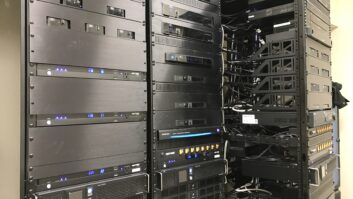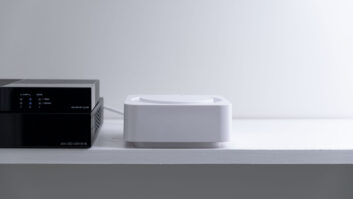Editor’s Note: The author of this article assumes that the reader has a prior knowledge of how to design and install structured wiring systems, twisted pair cabling and RJ-45 connectors. If you don’t, please contact one of the many product manufacturers or industry associations for more information. While many of the principles are the same, this article is going to focus on how to physically connect and configure multiple computers and printers within a home. At the same time you will learn how to enable broadband access through a DSL modem.
Before determining how to properly connect and configure a home network, first count up how many computers the network will support. You also will need to determine how many printers or peripheral devices (scanners and plotters) will be accessible by the various computers. If the printers and other devices will be attached directly to the various computers through USB or parallel ports, then you can just include the number of computers in the calculation.
This is also a good time to add in the number of audio/video and control devices in the home that have a network interface. If the home has a home control system, it will undoubtedly include an Internet connection. Most of the new PVRs (personal video recorders) and digital music servers rely on the Internet for content or scheduling information. If you are still with me, let’s start counting.
In our theoretical home, we find two personal computers (each with an attached local printer), a laser printer (attached to the home office computer), an IP interface to our A/V control system (visit www.vantagecontrols.com for an example) and a digital music server with an ethernet port on the back (visit www.request.com for an example).
We are trying to first determine the size of the switch that we need in order to connect all of these devices together.
At a minimum we only need a four-port switch, but because the price per port is so low these days, I suggest that you install an eight-port switch to provide for additional growth and perhaps additional revenue opportunities for your firm. Every network also is going to require a modem and a router. In most cases the router and the switch are combined into a single package. Make sure that you are installing a switch and not a hub. Data passes through a hub at a slower speed than a switch.
Each computer must have a network interface card (NIC) installed to access the switch and the router. Most computers these days come with a NIC as standard equipment, but don’t assume anything until you have actually seen the computers that your client may own. Now let’s just take a step-by-step tour of getting the network up and running.
Step One: After determining which computer will be the “host” of the network, go ahead and connect the modem to the telephone line and the host computer directly to the modem.
Follow the instructions that came with the modem and load the modem software on the host computer. If you do this correctly, then you will have that computer connected to the Internet within an hour or less. Don’t forget to keep the power to the modem and to the PC turned off until you have made all of your connections. Once you have the network up and running, the router will be a bit more forgiving when connecting and disconnecting network cables.
Step 2: On the same computer, install the software that came with the router. Typically you would do this before you actually connect the router between the modem and the “host” computer (see your router installation instructions for more details). Once the software recognizes the computer and the modem, you will be prompted to shut everything down and insert the router and switch between the computer and the modem. Power up the modem again and wait for all activation lights to turn green. Next, power up the router, wait a minute and power up the computer. The router software will then prompt you to complete the installation and will explain how to add any other computers to the network.
Step 3: You should now have both PCs connected to the Internet. We still need to make sure that each PC can access all of the printers that we connected, as well as have the ability to access files on each other’s disc drives. If you don’t have a copy, I would highly recommend that you purchase This Wired Home by Alan Nelbauer. This book, published by Microsoft Press, is packed with a wealth of information on setting up a network. I also recommend another excellent reference guide from UStec, called Computer Networking and tecGates. It has proven
to be a very useful tool for my field
installation team.
Before we move on, it’s important to recommend that all PCs on your customer’s network be running the same operating system. If your client has three or more computers, it may be more economical for them to purchase a multi-seat license, rather than individual licenses.
Now, let’s set up the printers for access by both of the PCs in our theoretical home. If you are running Windows XP, go to the Control Panel, click on “Select Printers and Faxes,” and then right click on the icon for the printer attached to the host PC. Next, left click on “Sharing” and then mark the box indicating that you want to share the printer with other users on the network. Repeat this procedure for any other printers connected to the host computer, and then do the same on the other computers on the network. Now both computers have access to all three printers on the network.
Step Four: There are several different ways that you can share files on a network. For now let’s just make an existing file or folder available to the second computer from the host computer. Many parents want to have a place for their children to save their homework. This is a very simple application for you to implement. From the desktop, click “Start,” then “My Network Places, Shared Documents,” and finally “Add a Shared Folder.” Follow the simple directions to set up a folder called “Homework.” Once you have completed this task, the other PCs on the network will be able to access the Homework folder by clicking on shared documents from their respective computer.
Step Five: Now you need to connect the A/V controller and the digital music server to the router. You will need to make sure that the devices have been configured with the proper IP address per the installation manuals included with the products.
You may be asking yourself several key questions as you finish reading this article. The all-important one is whether or not you have the resources to enter into this service offering. Are your sales people comfortable with selling these services? Who can implement these services? What should you charge your client? How much time will it take to complete a network? Who assumes responsibility when the DSL modem fails? Do your homework, talk to others in the business and contact the list of resources that I have provided. Good luck and much success to you.
To learn more about structured wiring systems, visit the following manufacturer and trade association web sites: www.bicsi.org, www.ce.org, www.cedia.org, www.channelplus.com, www.leviton.com, www.onqtech.com, www.ustecnet.com.
Scott McAllister ([email protected]) is president and co-owner of Northwest Design Group Inc. in Fair Oaks, California. He also serves on the board of directors of CEDIA.







